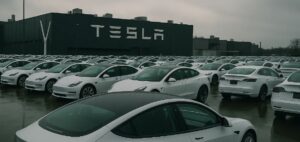China continues to reinforce its dominance of the global electric vehicle market.
In July 2024, the market share of electric and plug-in hybrid vehicles in China exceeded 50%, in stark contrast to the 20.5% achieved in Europe in June. This momentum reflects a well-orchestrated national strategy that has enabled China to become the undisputed leader in electromobility.
Massive support from the Chinese government, combined with a well-established local battery industry, has enabled manufacturers like BYD to offer vehicles at competitive prices, making electric vehicles accessible to a large proportion of the population.
In Europe, the transition to electric is hampered by a number of obstacles, including persistently high costs and a reliance on subsidies to stimulate demand.
The end of purchase subsidies in Germany, for example, led to a sharp drop in electric vehicle sales, illustrating the vulnerability of the European market to increasingly fierce competition.
European response and future challenges
Faced with the rapid expansion of Chinese exports, the European Union reacted in July 2024 by imposing additional customs duties on electric vehicle imports from China, reaching up to 38%.
This measure is designed to protect Europe’s ailing automotive industry from a Chinese supply that enjoys a decisive cost advantage thanks to large-scale domestic battery production.
However, this protectionist response alone will not suffice.
European automakers must quickly revise their strategy, developing more affordable models tailored to the needs of the local market.
Initiatives such as the imminent launch of the Renault 5 and Citroën ë-C3 at more competitive prices testify to this need for innovation to remain relevant in the market.
The gap between China and Europe in the field of electromobility continues to widen, and the challenges for the European industry are many.
The Chinese market, having reached a level of maturity, is moving towards a phase where supply and demand naturally balance out, without the need for massive subsidies.
On the other hand, Europe still needs to overcome structural obstacles and accelerate its transition to more efficient and economically viable power generation if it is to catch up.





















